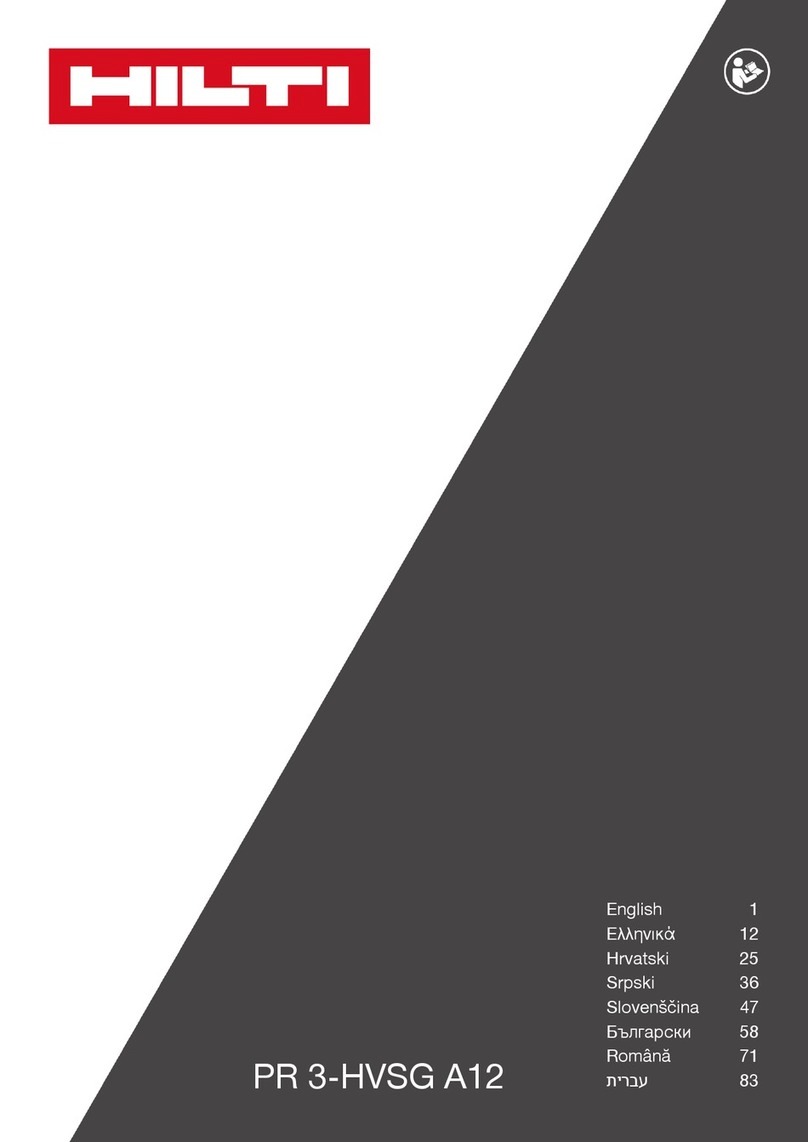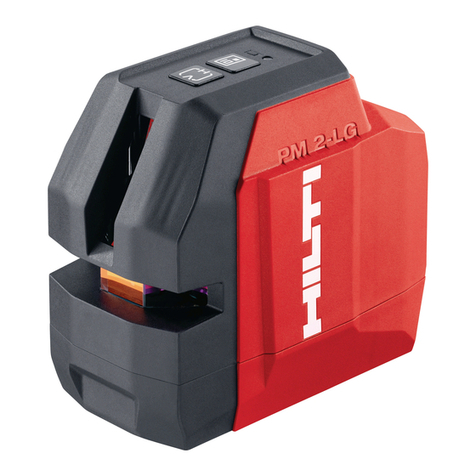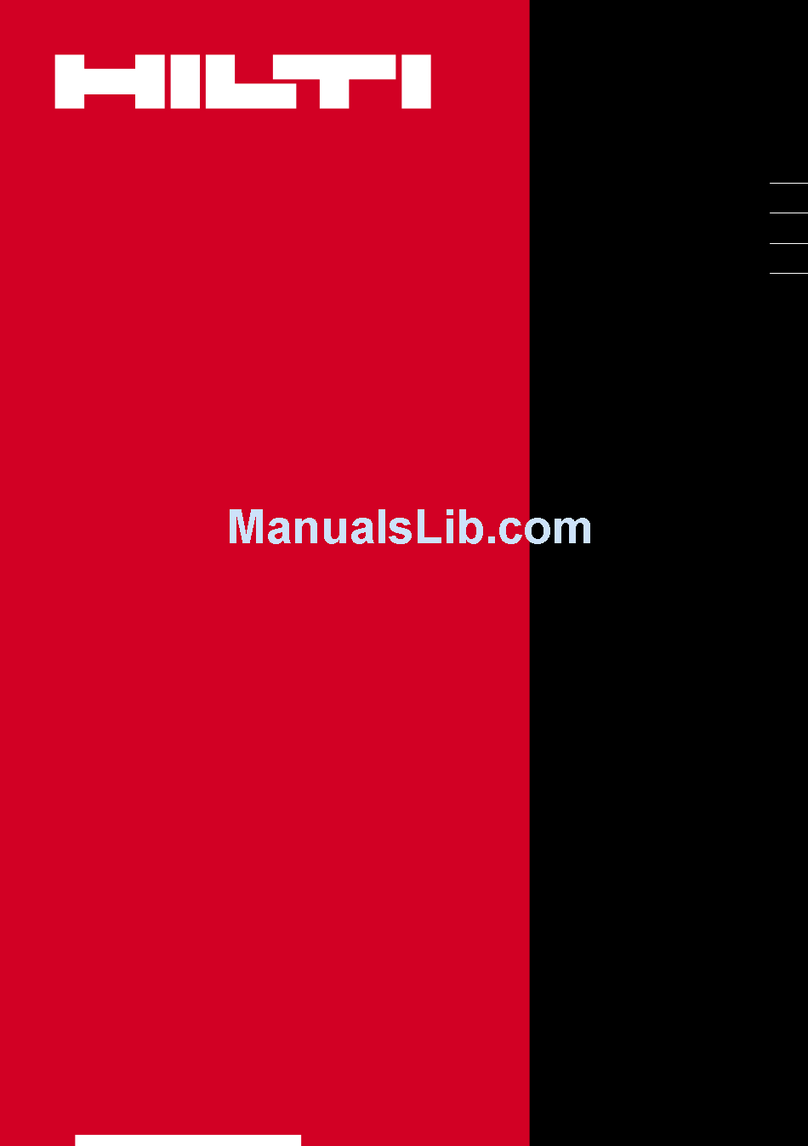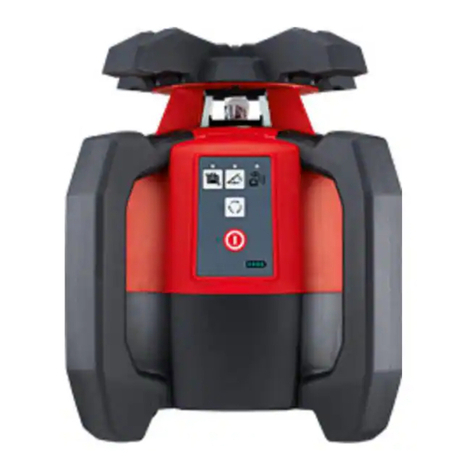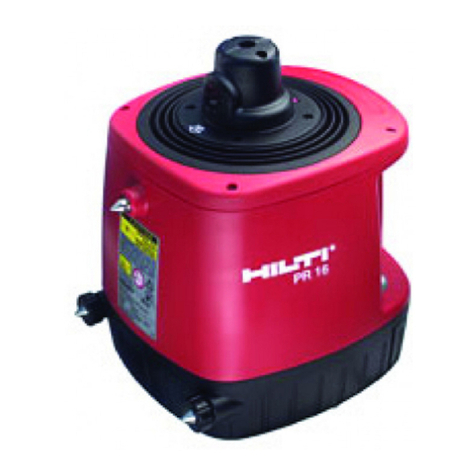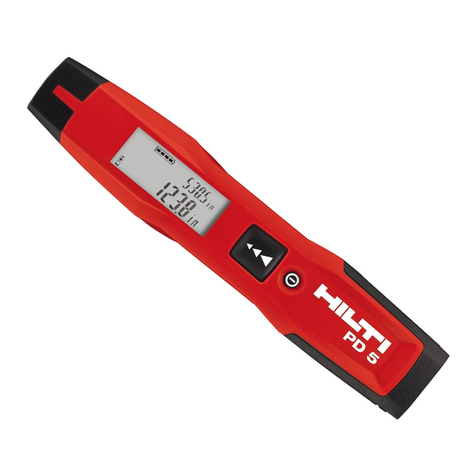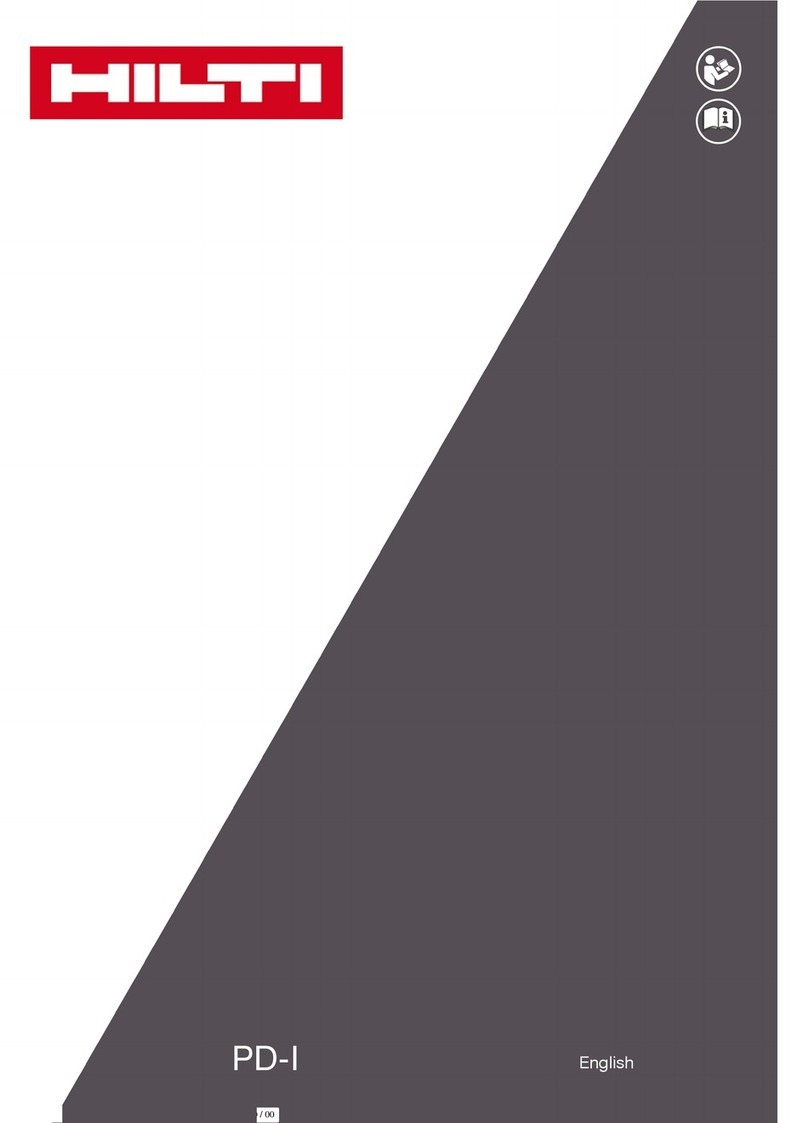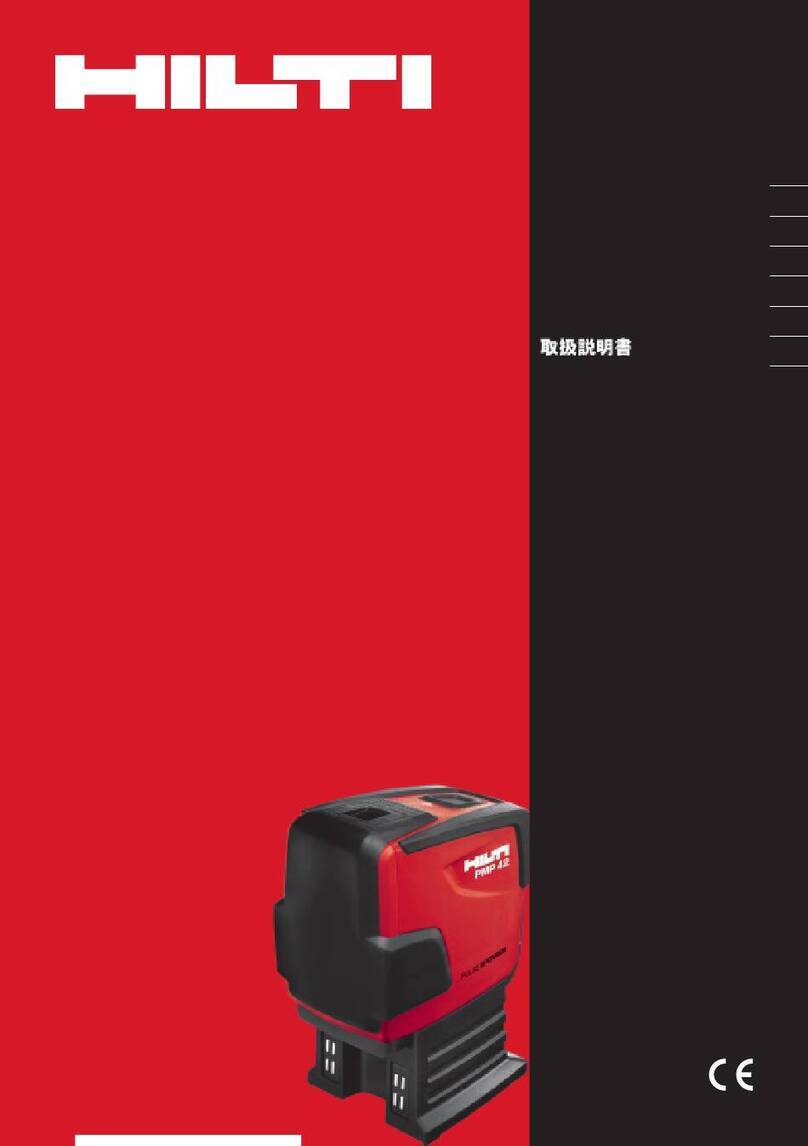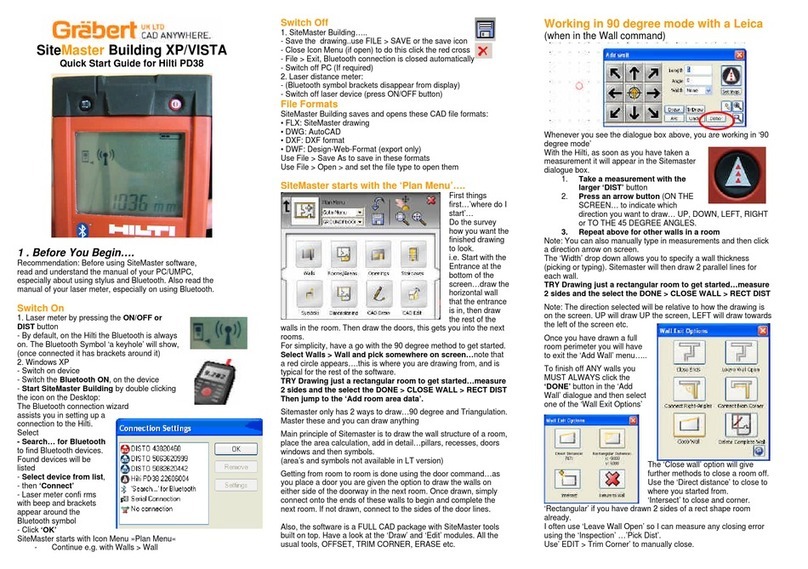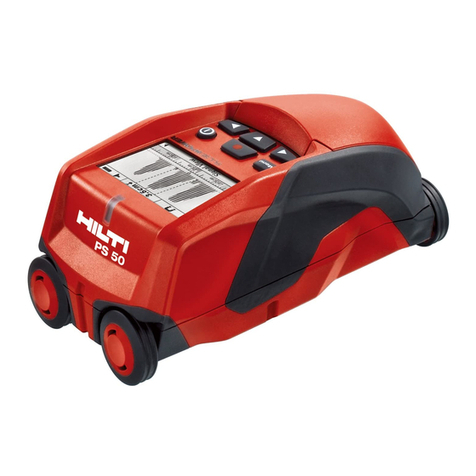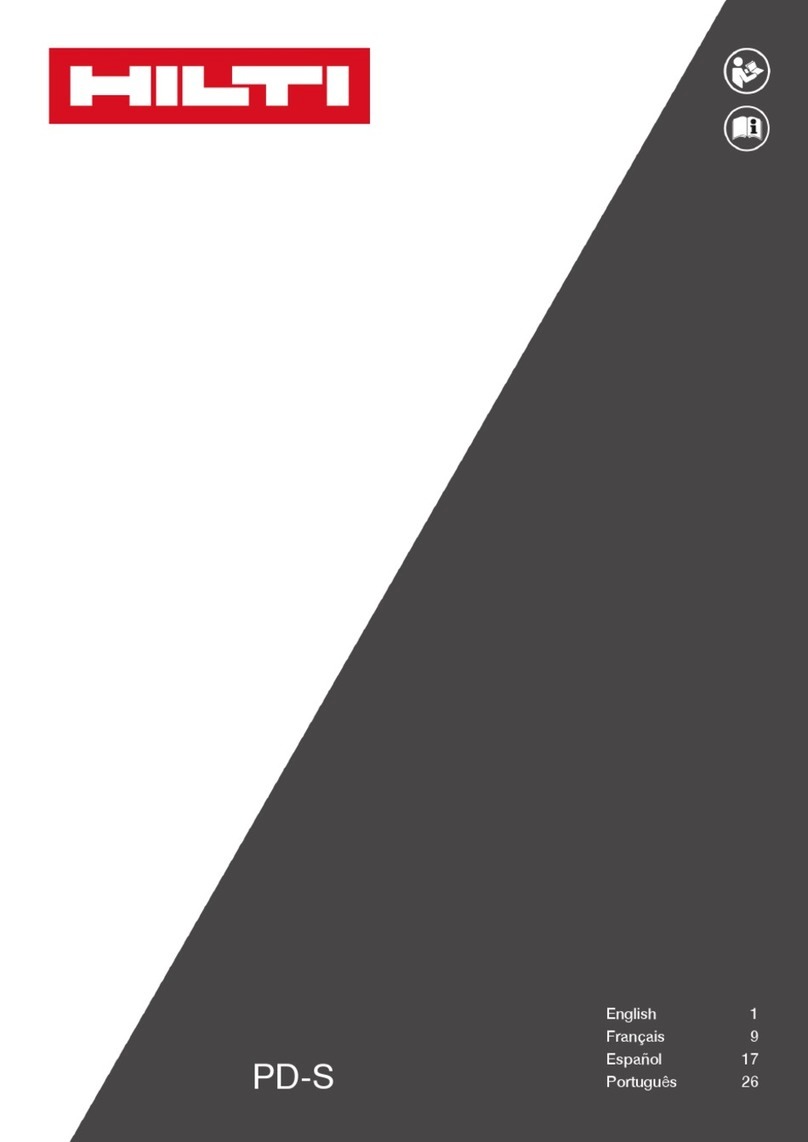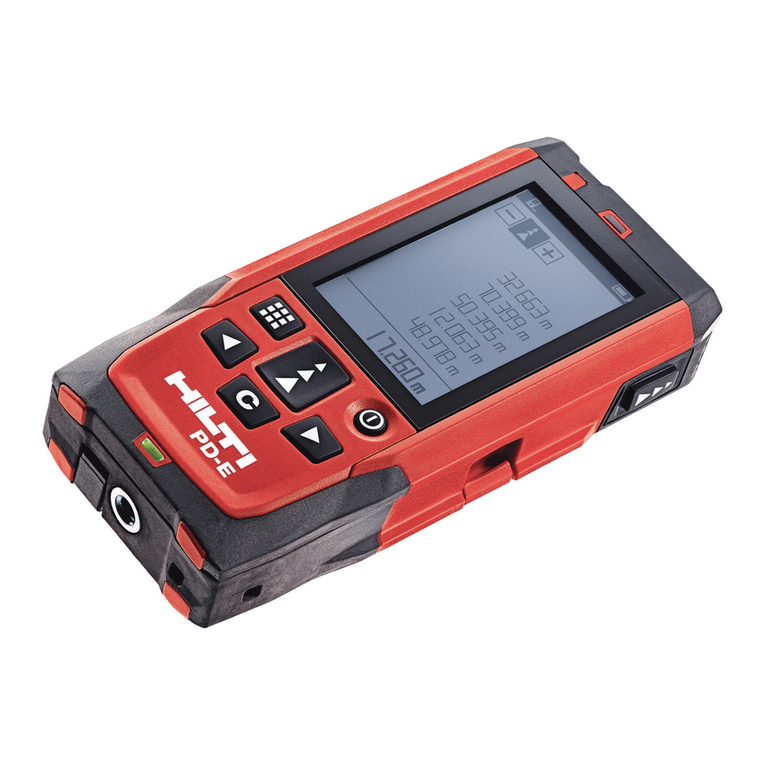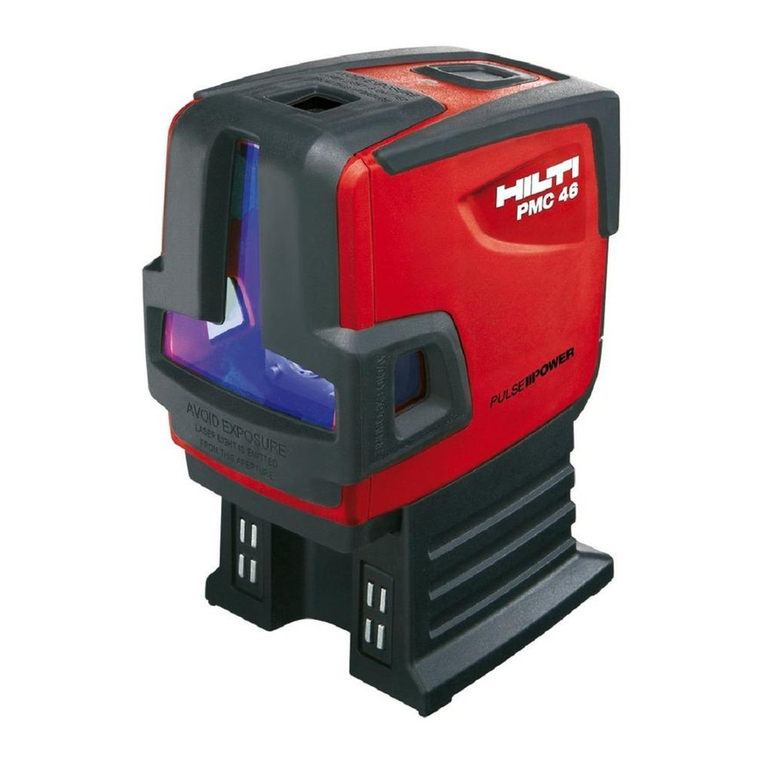
i) Do not point the tool toward the sun or other
powerful light sources.
5.2 Proper organization of the workplace
a) Avoid unfavorable body positions when working
on ladders or scaffolding. Make sure you work
from a safe stance and stay in balance at all
times.
b) Check the measuring reference setting before
taking the measurement.
c) When the tool is brought into a warm environ-
ment from very cold conditions, or vice
versa,
allow it to become acclimatized before use.
d) As a precaution, check the previous settings and
adjustments you have made.
e) When setting up the tool with the aid of the
bubble level, view the bubble level at a slight
angle.
f) Secure the area in which you are working and
take care to avoid directing the beam towards
other persons or towards yourself when setting
up the tool.
g) Use the tool only within its specified limits.
h) Observe the accident prevention regulations ap-
plicable in your country.
5.3 Electromagnetic compatibility
Although the tool complies with the strict require-
ments of the applicable directives, Hilti cannot en-
tirely rule out the possibility of the tool being subject
to interference caused by powerful electromagnetic
radiation, leading to incorrect operation. Check the
accuracy of the tool by taking measurements by other
means when working under such conditions or if you
are unsure. Likewise, Hilti cannot rule out the pos-
sibility of interference with other devices (e.g. aircraft
navigation equipment). The tool complies with the
requirements of class A; The possibility of interfer-
ence occurring in a domestic environment cannot be
excluded.
5.4 General safety rules
a) Check the condition of the tool before use. If the
tool is found to be damaged, have it repaired at
a Hilti service center.
b) The user must check the accuracy of the tool
after it has been dropped or subjected to other
mechanical stresses.
c) Although the tool is designed for the tough con-
ditions of jobsite use, as with other measuring
instruments it should be treated with care.
d) Although the tool is protected to prevent entry
of dampness, it should be wiped dry each time
before being put away in its transport container.
5.5 Electrical
a) Keep the batteries out of reach of children.
b) Do not allow the batteries to overheat and do not
expose them to fire. The batteries may explode or
release toxic substances.
c) Do not charge the batteries.
d) Do not solder the batteries into the tool.
e) Do not discharge the batteries by short
circuit-
ing. This may cause them to overheat and present
a risk of personal injury (burns).
f) Do not attempt to open the batteries and do not
subject them to excessive mechanical stress.
5.6 Laser classification
Depending on the version purchased, the tool com-
plies with Laser Class 2 in accordance with IEC825ಣ
1:2003 / EN60825ಣ1:2003 and Class II in accordance
with CFR 21 § 1040 (FDA). This tool may be used
without need for further protective measures. The
eyelid closure reflex protects the eyes when a per-
son looks into the beam unintentionally for a brief
moment. This eyelid closure reflex, however, may be
negatively affected by medicines, alcohol or drugs.
Nevertheless, as with the sun, one should not look
directly into sources of bright light. Do not direct the
laser beam toward persons.
5.7 Transport
Always remove the batteries before shipping the
tool.
en
32
